The grief and heartache of losing a loved one in an unexpected, preventable incident are unparalleled. Beyond the profound emotional toll, this tragic event often comes with significant financial challenges and many unanswered questions.
In legal terms, wrongful death is a death that the negligence, carelessness, or intentional actions of another party have caused. It’s a tragedy that could and should have been avoided. Understanding this definition is the first step toward recognizing when a wrongful death has occurred and when it might be time to explore legal options.
Understanding the wrongful death settlement process can be instrumental as you navigate the path toward justice and healing. Not only can it provide financial support during a challenging period, but it can also help bring about a sense of closure, justice, and accountability.
During such overwhelming times, the expertise and guidance of a wrongful death attorney can be indispensable in helping navigate the complex legal landscape.
Wrongful Death Settlements in Minnesota
In Minnesota, like every other state, wrongful death is governed by specific statutes. These laws determine who can file a wrongful death lawsuit, the time frame within which to do so, and the type of damages you can claim.
At the core of Minnesota’s wrongful death law is Minnesota Statutes section 573.02. This statute states that when a death is caused by the wrongful act or negligence of any person or corporation, the trustee appointed by the court can maintain an action for damages against the party responsible for the death.
It’s important to note that this law applies whether the party at fault intended to cause harm or not. The crux of a wrongful death case is that a life was lost due to their actions or inaction.
A wrongful death lawsuit is brought forward by a ‘trustee’ appointed by the court, typically the surviving spouse or family members.
According to Minnesota law, eligible parties often include the deceased’s surviving spouse, children, parents, or siblings.
In some other death cases, however, other parties, like grandparents or the personal representative of the deceased’s estate, may also bring a wrongful death action. The trustee effectively represents the interests of all the survivors, and any damages won are held for the benefit of the ‘next of kin,’ as defined by the law.
Minnesota Wrongful Death Statute of Limitations
In Minnesota, the statute of limitations stipulates that a wrongful death claim must be filed within three years of the deceased person’s death. However, there’s a caveat to the statute of limitations in this rule: if an intentional act of violence caused the death, the lawsuit can be filed within six years.
Common Causes of a Wrongful Death Claim
Wrongful death claims can arise from various situations where carelessness or deliberate actions result in fatal consequences. Here are some of the most common scenarios:
- Motor Vehicle Accidents Claims: This includes accidents involving cars, motorcycles, trucks, and bicycles. Carelessness such as distracted driving, speeding, driving under the influence, or failure to follow traffic laws often forms the basis of these claims.
- Medical Malpractice Claims: These cases involve medical malpractice like misdiagnosis, delayed diagnosis, surgical errors, childbirth injuries, medication mistakes, or neglect by healthcare providers that result in a patient’s death.
- Workplace Accidents Claims: Especially common in high-risk industries like construction, manufacturing, mining, and agriculture, these claims often result from failure to adhere to safety regulations, providing inadequate safety equipment, or other forms of employer negligence.
- Product Liability Claims: If a consumer product is defectively designed, manufactured, or lacks adequate warnings, and this leads to death, it can form the basis of a wrongful death claim. This type of wrongful death can range from defective vehicles to dangerous drugs.
- Premises Liability Claims: These cases arise when a property owner’s negligence results in a fatal accident, such as a slip and fall, drowning in an unsecured pool, or a dog attack.
- Intentional Acts of Violence Claims: These claims can stem from fatal assaults, murders, or other deliberate actions that result in death.
Examples of Qualifying Wrongful Death Cases
Example 1

Dr. Johnson prescribed a new drug to Mrs. Peterson for her cardiovascular disease. Unbeknownst to him, Mrs. Peterson had a severe but rare allergy to one of the medication’s components, which led to a fatal anaphylactic reaction.
Why It Qualifies as a Wrongful Death Case: Here, medical malpractice resulting in wrongful death could be claimed if it is proven that Dr. Johnson didn’t take appropriate steps to understand Mrs. Peterson’s allergies before prescribing the medication.
Example 2

Mr. Walker, a father of two, was killed when his car was hit by Mr. Thompson, an uninsured drunk driver, at the intersection of 1st Avenue and Washington Street.
Why It Qualifies as a Wrongful Death Case: Despite the drunk driver being uninsured, Mr. Walker’s family can seek a wrongful death lawsuit under their own uninsured motorist policy. Mr. Thompson’s intoxicated driving was the direct cause of the car accident and Mr. Walker’s death, making this a valid claim.
Example 3

Mr. Brown was driving home one night on a rural highway. A commercial truck owned by Big Rig Logistics swerved into his lane, causing a devastating head-on collision.
The accident was caused due to the truck driver falling asleep at the wheel after a 16-hour shift, as confirmed by the onboard tracking systems. Mr. Brown did not survive the accident.
Why It Qualifies as Wrongful Death: This case could qualify for a wrongful death claim, as the truck driver’s carelessness caused Mr. Brown’s death. Moreover, if it can be established that the trucking company employing the driver was negligent in enforcing proper rest periods for its drivers, the company could also be held liable for any resulting truck accidents.
Non-Examples of Wrongful Death Claims
Non-Example 1

Mr. Smith ran a red light and collided with another vehicle, leading to his own death.
Why It Doesn’t Qualify as Wrongful Death: In this case, Mr. Smith’s own actions were the cause of the car accident, not the actions of another party. Thus, his family cannot file a wrongful death claim because he did not have the green light.
Non-Example 2

Mr. Davis died due to drug interactions after surgery. He failed to inform his healthcare providers about his regular illicit drug use, which interacts adversely with the post-surgery medications.
Why It Doesn’t Qualify as Wrongful Death: Mr. Davis’s failure to disclose his illicit drug use led to the fatal drug interaction. Therefore, it was not the result of the healthcare provider.
Non-Example 3

Ms. Carter, an experienced electrician, died in a workplace accident at the local power plant due to an error she made in handling high-voltage wires.
Why It Doesn’t Qualify as Wrongful Death: Ms. Carter’s death resulted from her own error, not her employer’s negligence. Even though it’s a tragic workplace accident, it does not qualify for a wrongful death claim under Minnesota law. It could, however, be eligible for workers’ compensation benefits.
If Ms. Carter died on the job (or as a result of the hazards of the job), then her estate and/or her dependents may be entitled to various benefits under the Minnesota Workers’ Compensation Act, including reimbursement of funeral expenses, reimbursement of medical expenses, and dependency benefits (including benefits to account for the deceased’s lost wages).
These benefits may be available regardless of whether the deceased worker was at fault.
Requirements to Prove Wrongful Death Claims
Establishing a wrongful death lawsuit under Minnesota law involves demonstrating certain key elements:
- Duty of Care: The first step is to show that the defendant owed a duty of care to the deceased. This means they had a legal obligation to ensure the safety or well-being of the deceased.
- Breach of Duty: The next step involves demonstrating that the defendant breached this duty of care. This could be any wrongful act or omission that resulted in a person’s death.
- Causation: It’s crucial to prove that the breach of duty directly caused the death. This requires demonstrating a direct link between the defendant’s actions (or inactions) and your loved one’s death.
- Damages: Lastly, you must show that the death has resulted in quantifiable damages. This can be economic, like lost wages, or non-economic, like emotional distress.
Types of Damages That Can Be Claimed
In a successful wrongful death claim, several types of damages may be awarded to adequately compensate for the losses sustained:
- Medical Expenses: This includes costs for any medical care related to the final illness or injury of the deceased.
- Funeral and Burial Expenses: The costs associated with funeral arrangements and burial or cremation services.
- Lost Wages and Benefits: This represents the economic loss of potential income the deceased would have earned if they had lived, including future wages and benefits like health insurance or pension.
- Loss of Companionship: Also known as loss of consortium, this refers to the emotional pain and suffering caused by the loss of love, comfort, guidance, companionship, and care from the deceased.
- Loss of Services: This covers the value of services the deceased would have provided, like childcare, housekeeping, or home maintenance.
- Punitive Damages: In cases where the defendant’s conduct was particularly egregious or malicious, damages may be awarded to punish the defendant
The Process of Wrongful Death Settlements
The path toward a wrongful death settlement involves several key stages, each requiring meticulous attention to detail and a robust understanding of the law.
These stages include filing the lawsuit, discovery and evidence gathering, negotiation and mediation, the trial process, and potentially an appeals process.
Filing the Lawsuit
The first step in pursuing a wrongful death claim is to file a lawsuit in a Minnesota court within the time limits outlined above.
This process starts with drafting a document known as a ‘complaint’ or ‘petition,’ which outlines the facts of the case, the legal basis for the claim, and the damages sought.
An experienced attorney can ensure your claim is presented comprehensively and compellingly right from the start.
Discovery and Evidence Gathering
After the lawsuit is filed, both parties embark on a phase known as ‘discovery.’
During discovery, each party investigates the claims and defenses of the other side, which involves reviewing relevant documents, deposing witnesses under oath, and seeking the insights of experts.
Evidence gathered during this phase might include medical records, accident reports, photographs, videos, and expert testimonies.
A diligent attorney and law firm will leave no stone unturned during this phase to construct the strongest possible case on your behalf.
Negotiation and Mediation
Before the case goes to trial, there’s usually an attempt to resolve the matter through negotiation or mediation. This stage involves dialogues between both sides’ attorneys, aiming to reach a fair and just settlement. Sometimes, a neutral third-party mediator is involved to facilitate discussions.
Successful negotiation or mediation can result in a settlement that adequately compensates you for your loss without the additional stress, time, and resources associated with a trial.
The Trial, if Settlement Is Not Reached
When a settlement is not reached, the wrongful death claim moves into the trial stage.
As the case commences, the plaintiff’s lawyer, representing the bereaved party, presents the evidence collected during the discovery phase to substantiate the wrongful death claim. They may call witnesses, including experts, to testify on various aspects of the case, such as how the death occurred, who is responsible, and the impact the death has had on the decedent’s loved ones.
The defendant’s side can then refute the plaintiff’s arguments, present their defense, and question the plaintiff’s witnesses. They may attempt to refute the claims, challenge the evidence, or argue about the extent of pecuniary loss suffered by the decedent’s family.
Pecuniary loss can encompass lost wages, medical expenses and funeral expenses, and other damages quantified by expert testimony from economists or actuaries who can calculate the financial impact over a specified time period.
The judge or jury deliberates once both sides have presented their cases and made their closing arguments. They assess the evidence, consider the testimonies, and evaluate the arguments before determining whether the defendant is liable, the extent of their liability, and the appropriate compensation to award.
Finally, the court will issue a final judgment that formally outlines the court’s decision and any awarded damages. It serves as the official record of the case’s resolution at the trial level and can become the basis for any potential appeals.
Appeals
The conclusion of the trial doesn’t necessarily signify the end of wrongful death cases. If either party believes there was a legal error in the trial process, they may choose to appeal the decision.
The appeals process involves a detailed review of the trial court proceedings by a higher court, up to the Supreme Court of the United States, in some cases. If the appellate court finds that a significant error occurred, it can reverse or modify the trial court’s decision or, in some cases, order a new trial.
Frequently Asked Questions About Minnesota Wrongful Death Settlements and Claims
What differentiates a personal injury claim from a Minnesota wrongful death claim?
While both types of claims arise due to negligence or intentional harm, a personal injury claim is pursued when the injured person survives the accident with serious injuries. In contrast, a wrongful death claim is filed when the injured person does not survive.
Who can file a wrongful death lawsuit in Minnesota?
In Minnesota, a wrongful death lawsuit is typically filed by a trustee, usually a close family member like a spouse, parent, or child. The trustee represents the interests of all surviving family members.
How do Minnesota juries decide on the amount of compensation in wrongful death claims?
Minnesota juries take into account several factors when deciding on the action to recover damages. These include the deceased’s age, health, life expectancy, earning capacity, as well as any personal injury suffered by the family.
Are there other penalties the defendant might face in Minnesota wrongful death cases?
Yes, the defendant may face criminal charges or administrative penalties, especially in cases involving deliberate harm or violation of Minnesota laws or regulations.
Can a surviving family member file a Minnesota wrongful death lawsuit even if they are not the deceased’s next of kin?
In Minnesota, the wrongful death attorney typically files on behalf of the next of kin. In certain circumstances, though, other surviving family members are appointed as the trustee. In such cases, they can file the claim, regardless of their relationship to the deceased.
Final Thoughts
The journey to a wrongful death settlement can be emotionally taxing and legally complex. Yet, the pursuit of justice and financial security for your family is a journey worth taking.
While navigating the wrongful death settlement process, it’s important to remember you’re not alone. Legal allies exist – an experienced lawyer will champion your rights and guide you through this intricate legal maze step by step.
Despite the challenges, pursuing a wrongful death settlement serves an essential purpose: to seek justice for your loved one, hold the responsible parties accountable, and provide financial stability in a time of profound change.
We encourage you to call for a free consultation with one of the experienced wrongful death attorneys at Meuser Law.








